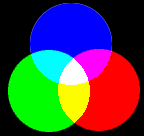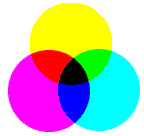|
Voici
quelques conseils sur la technique photo.
Comme pour un instrument de musique, l'appareil photo ( ou vidéo
) est le prolongement de votre main, l'outil, le lien entre vos
envies et vos concrétisations. Il est donc nécessaire
de savoir ce que vous voulez faire, vers quelles genres de photos
vous êtes attiré.
·>
CHOIX DE L'APPAREIL / OBJECTIF :
Beaucoup pense que c'est l'appareil qui est pour une trop bonne
partie de la qualité d'une photo... C'est complètement
faux : on réalise de très bon clichés avec
un jetable, tout dépends de comment on photographie.
- Si vous avec plus de moyens,
l'acquisition d'un bon appareil photo est forcement mieux. Si les
agrandissement vous interessent, vous pouvez vous orienter vers
un appareil photo moyen format. Le numérique permet le contrôle
plus pratique et facile de l'image, mais le rendu des cliché
pris en argentique est plus fin, plus riche. Pour une personne intéressé
par le sport, optez pour un appareil incluant une bonne gamme de
vitesse d'obturation rapide, afin de pouvoir prendre des photos
dont l'action est rapide.
- Pour les paysages, les objectifs
grand angles sont requis, pour le portrait en studio, les objectifs
fixes entre 80 et 120 mm sont l'idéal ( il est préférable
de bouger autour du sujet ), pour les reportages, un bon réflex
et un zoom 50 - 200 mm est très pratiques, le tout en tenant
en compte la luminosité de l'objectif, de la qualité
de l'appareil, etc...
·>
SUJETS :
Tout dépends de votre style, et le choix des sujets est illimité,
laissez libre cours à vos délires les plus fous...
Mais les images contenant du contraste, une large gamme de couleur
et de la profondeur de champ sont naturellement plus appréciées,
que ce soit du paysage, du charme, du sport ou de l'architecture.
·>
COMPOSITION :
Elle est essentielle pour mettre en valeur votre shoot, et constitue
un art à par entière, souvent mal maitrisé
au début. Entrainez vous, dès le début à
soigner :
- le plan ( espaces " vides
" entre le sujet principale et le bord de la photo )
- la compositions ( agencement
des différents éléments dans le plan de l'image
)
- les lignes directrices ( le
" mouvement " que peuvent faire sous entendre divers traits
ou courbes plus ou moins visibles ),
- les formes / symboles ( apparitions
plus ou moins soutenus de cercles, croix, triangles, vagues... ),
- le ton ( ton brun, ton rouge,
par exemple... ),
- le grain ( grain fin ou gros,
en fonction de la sensibilité. Plus l'ISO augmente numériquement,
plus le grain est épais, et plus la prise est sensible à
la lumière. Par exemple, une prise à 50 ISO sera plus
sombre et aura un grain plus fin qu'une prise à 400 ISO (
ancien ASA ou DIN ) qui sera plus clair avec un grain plus gros
).
etc, liste non exhaustive, votre style se définira naturellement
par la suite...
·>
LUMIÈRE :
Pas de cliché sans lumière! cela dit, il ne faut pas
forcement avoir un studio photo pro à 150 000 € l'ampoule
pour faire d'excellentes photos! On peut très bien être
satisfait avec ses propres éclairages fait maison, ou une
simple lumière de lampe de chevet, tout dépends encore
de ce que vous voulez faire. Il faut néanmoins comprendre
comment cela fonctionne, en résumé, la lumière
rebondis ou est absorbée sur / par certaines surfaces. Par
exemple : orientez une lumière de couleur blanche sur une
surface incliné réfléchissante rouge ( toile,
carton ), et la lumière qui vas " rebondir " de
la surface aura une teinture rouge. Orientez une lumière
de couleur bleu vers une surface absorbante bleu ( filtre ), et
la lumière qui vas " traverser " la surface aura
une teinture moins bleu. C'est la synthèse par addition et
celle par soustraction :
- La synthèse additive
: due à l'addition d'une composante de la lumière
à l'émission, elle peut être faite à
l'aide de lampes correspondants aux couleurs complémentaires.
Ex à partir d'une lumière blanche :
vert + bleu = cyan
bleu + rouge = magenta
vert + rouge = jaune
* addition de toutes les couleur dans
ce contexte = blanc. Ex : fonctionnement d'une télévision
couleur.
|
Here
some councils on the photo technique.
As for an musical instrument, the camera is the prolongation of
your hand, the tool, the link between your envy and your realizations.
It is thus necessary to know what you want to do, towards which
kinds of photographs you are attracted.
·>
CHOICE OF THE APPARATUS / OBJECTIVE :
Much thinks that it is the apparatus which is for a too good part
of the quality of a photograph… They is completely false: one
carries out very good stereotypes with disposable, all depend on
how one photographs.
- If you with more means, the
acquisition of a good camera is forcing better. If the enlarging
interest you, you can direct towards a camera average format. The
digital technology allows the more practical and easy control of
the image, but the depiction of dumped and finer, richer in argentic.
A person interested by the sport, choose an apparatus including
a good speed range of obturation, in order to be able to take photographs
whose action is fast.
- For the landscapes, the objectives
large angles are required, for the portrait in studio, the fixed
objectives between 80 and 120 mm are the ideal ( it is preferable
to move around the subject ), for the reports, a good reflex camera
and a zoom 50 - 200 mm is very practical, the whole while holding
of account the luminosity of the objective, the quality of the apparatus,
etc...
·>
SUBJECTS :
All depend on your style, and the choice of subject is unlimited,
leave free course to your are delirious most insane... But the images
containing of contrast, a broad range of color and depth of field
are appreciated naturally, than it is landscape, charm, sport or
architecture.
·>
COMPOSITION :
It is essential to emphasize your shot, and constitutes an art with
by whole, often badly control at the beginning. Involve, as of the
beginning to be looked after :
- the plan ( "empty"
spaces between the subject principal and the edge of the photograph
). the compositions ( fitting of the various elements in the plan
of the image )
- the guiding lines ( the "
movement "which can make under hearing various features or
more or less visible curves )
,
- forms / symbols ( appearances
more or less constant of circles, cross, triangles, waves... ),
- the tone ( your brown, your
red, for example... ),
- the grain ( fine or coarse
grain, according to the sensitivity. The more numerically the ISO
increases, the thicker the grain is, and the more sensitive the
catch is to the light. For example, a catch with 50 ISO will be
darker and will have a grain finer than a catch with 400 ISO ( old
ASA or DIN) which will be clearer with a more coarse grain ).
etc, list nonhexhaustive, your style will define itself naturally
afterward...
·>
LIGHT :
No the stereotype without light! however, one should not forcing
have a studio photo pro with 150.000 € the bulb to make excellent
photographs! One can be satisfied very well With his(her,its) own
lightings makes house, or a simple light of bedside lamp, all still
depend on what you want to do. It should nevertheless be included/understood
how that functions, in short, the light rebounded or is absorbed
on/by certain surfaces. For example: direct a light of white color
towards a red reflective surface tilted ( Cloth, box ), and the
light which " will rebound " of surface will have a red
dyeing. Direct a light of color blue towards an absorbing surface
blue ( filter ), and the light which " will cross " surface
will have a dyeing less blue. It is the synthesis by addition and
that by subtraction :
- the additive synthesis : had
with the addition of a component of the light to the emission, it
can be made using lamps correspondents with the complementary colors.
Ex starting from a white light :
green + blue = cyan
blue + red = magenta
green + red = yellow
* addition of all the color in this
context = white. Ex: operation of a television color.
|

